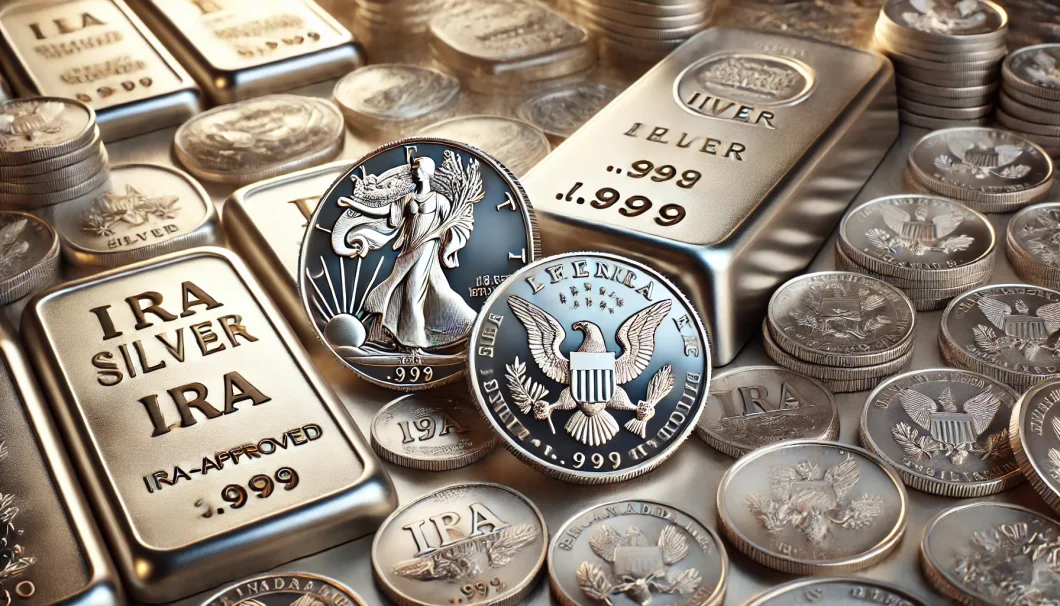
When it comes to diversifying retirement portfolios, many investors look beyond traditional stocks and bonds. Precious metals, particularly silver, have gained popularity as a way to hedge against economic volatility. However, not all silver is created equal when it comes to including it in an Individual Retirement Account (IRA). In this blog post, we will delve into what IRA approved silver is, its history, its benefits, and why it is an essential consideration for savvy investors.
Understanding IRA Approved Silver
IRA approved silver refers to silver bullion that meets specific requirements set by the Internal Revenue Service (IRS) for inclusion in a self-directed IRA. These requirements ensure that the silver maintains a certain level of purity, authenticity, and liquidity. To qualify, silver must be at least 99.9% pure, also known as .999 fine silver, and must be produced by a national government mint or a recognized private mint. Common examples include American Silver Eagles, Canadian Silver Maple Leafs, and certain bars or rounds from accredited manufacturers.
The reason for these stringent requirements is to protect investors from the risk of purchasing substandard or counterfeit silver. By setting high standards, the IRS ensures that the silver held in retirement accounts is of verifiable quality and easily tradable in the marketplace.
A Brief History of Silver in Retirement Accounts
Silver has been valued as a form of currency and a store of wealth for thousands of years. Its use in retirement accounts, however, is a more recent development. The concept of holding physical silver in IRAs became possible with the passage of the Taxpayer Relief Act of 1997. Before this act, only traditional assets like stocks, bonds, and mutual funds could be included in IRAs.
The 1997 legislation expanded the types of investments that could be held in IRAs, including certain precious metals like silver, gold, platinum, and palladium. This move was seen as a way to give investors more control over their retirement savings and to offer a safeguard against inflation and economic downturns. As a result, the demand for IRA approved silver has grown steadily over the past two decades.
The Benefits of Investing in IRA Approved Silver
Investing in IRA approved silver offers several benefits, especially in times of economic uncertainty. Here are some key advantages:
- Hedge Against Inflation: Silver, like other precious metals, tends to retain its value over time, making it an effective hedge against inflation. As the purchasing power of paper currency decreases, the value of silver typically rises, preserving the wealth of the investor.
- Portfolio Diversification: Including silver in a retirement portfolio helps diversify investment holdings, reducing overall risk. Silver often behaves differently from stocks and bonds, providing a buffer during market volatility.
- Tangible Asset: Unlike paper assets, silver is a physical commodity that you can hold in your hand. This tangibility offers a sense of security that other investments cannot provide.
- High Liquidity: IRA approved silver is easily tradable and can be quickly converted into cash if needed. This liquidity is crucial for retirees who may need to access their funds without delay.
How to Add Silver to Your IRA
Adding silver to your IRA involves several steps, but the process is straightforward with the right guidance. Here’s a step-by-step overview:
- Choose a Self-Directed IRA: Not all IRAs allow for the inclusion of precious metals. You need to open a self-directed IRA with a custodian that specializes in precious metals. These custodians are responsible for ensuring that all IRS regulations are followed.
- Fund Your IRA: Once your self-directed IRA is set up, you can fund it through a rollover from an existing retirement account or by making a direct contribution.
- Select IRA Approved Silver: Work with your custodian or a trusted precious metals dealer to select the silver that meets the IRS requirements. Ensure that the silver is .999 fine and comes from an approved mint.
- Storage: The IRS mandates that IRA approved silver be stored in an approved depository. You cannot take physical possession of the silver while it is held within the IRA. The depository will store the silver securely until you are ready to sell it or take a distribution.
- Regular Review: Like any investment, it’s important to review the performance of your silver holdings regularly. Keep an eye on market trends and consult with your custodian or financial advisor to ensure that your investment strategy aligns with your retirement goals.
The Types of Silver Eligible for IRA Inclusion
Not all silver products qualify for inclusion in an IRA. The most common forms of IRA approved silver include:
- American Silver Eagles: Minted by the U.S. Mint, these coins are among the most popular silver products in the world. They are recognized for their purity, weight, and legal tender status.
- Canadian Silver Maple Leafs: Produced by the Royal Canadian Mint, these coins are also highly sought after for their purity and quality.
- Austrian Silver Philharmonics: Minted by the Austrian Mint, these coins are known for their fine craftsmanship and are .999 pure.
- Silver Bars and Rounds: These can be included in an IRA as long as they are produced by an accredited refiner, assayer, or manufacturer, and meet the purity standards.
Potential Risks and Considerations
While investing in IRA approved silver offers many benefits, it’s important to be aware of the potential risks.
- Market Volatility: The price of silver can be volatile, and while it can act as a hedge against inflation, it is also subject to significant price swings.
- Storage Costs: Storing silver in an approved depository comes with fees that can eat into your investment returns. It’s essential to consider these costs when calculating the potential benefits of holding silver in your IRA.
- Liquidity Concerns: Although silver is generally liquid, there may be times when selling at a favorable price could be challenging, especially during periods of market distress.
Conclusion
IRA approved silver can be a valuable addition to your retirement portfolio, offering diversification, a hedge against inflation, and the security of a tangible asset. However, it’s crucial to weigh the benefits against the potential risks and costs. Consulting with a financial advisor who understands precious metals and self-directed IRAs can help you make an informed decision that aligns with your retirement goals.
In conclusion, understanding what IRA approved silver is and how it can fit into your retirement strategy is essential for anyone looking to diversify their portfolio and protect their wealth against economic uncertainties. By carefully selecting and managing your silver investments, you can take advantage of this timeless asset in your retirement planning.

